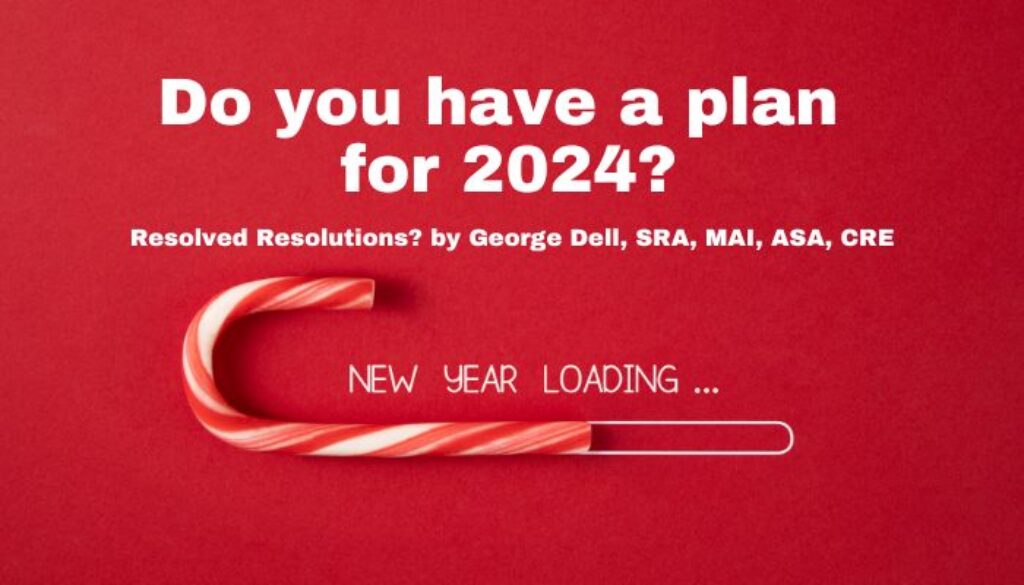Resolved: I am going to do better this year. Done!
Each new year, most of us give some thought to how the next year might be better or different from last year. We set some intentions. We call these “Resolutions.”
Or not. What’s wrong with this pledge to self? Lets look.
You have to ask yourself a critical question: “Is this truly something I want? Or am I just kidding myself to have an excusable excuse, the whole joke about resolutions that everyone makes?”
Stop here. Do not read the rest of this blog. Unless you are NOT just fooling yourself!
If you are sincere, and not deceiving yourself conveniently, then here is a way to be able to live with yourself – and maybe, just maybe, make yourself happier and more self-assured.
Let’s say you resolved to learn the new data analysis methods, replacing the legacy ‘process’ for appraisal. We follow the goal setting basics: why, what, when, how, and where.
WHY: The purpose of your goal is best when it is beyond yourself. “Other-directed” they say. Make it for your family, your community, or reputation. Self-centered behavior nearly always fails. You’ve resolved to make it so that you can exit this world with a clean soul, a hardy mental, and a personal peace.
WHAT: Your goal should be specific, actually doable, and something you truly, really want, as above. If the goal itself is too general, like “become modern competent,” then reduce it into smaller parts (separate targets or milestones or even just time segments like “the first 15 minutes of each day, at least 5 out of every 7 days”). This gives you flexible but internally insistent tension.
WHEN: If outside scheduling or help is needed, identify when that is available – sign up, or set a schedule, as above. “If its not on the calendar, it probably won’t happen!”
HOW: Will it require special tools, software, or availability? If so, set this acquisition as a first ‘when’ goal! I find that writing blogs – such as this one – is easiest if done as set of small goals. The first “small-goal” is to just get my blog template, pick a topic name, and write the first sentence (website Search Engine Optimization rules require the first sentence to contain a word from the title)!
Two things have now happened: 1) I have started, and know the path; 2) My subconscious continues happily working on the topic, even as I sleep! I often joke that my best work is at night, while asleep.
WHERE: Is my “data analysis” competence to be learned via classes, on-line tutorials, YouTube videos, books, or by working with others? Discover what is really needed. For example: Data Science is a very broad topic. So broad that it can be hard to find actual actionable learning.
Data science itself requires knowledge, or competence in three topics: computation, visualization and subject-matter expertise. For example, computation means using suitable modern software, which enables fast, two-way visual-brain (graphs, maps, tables, summaries) connections. For valuation, Subject-Matter Expertise includes 1) your prior knowledge of valuation and specific market familiarity; 2) an understanding of the specifics of asset-oriented microeconomics; and 3) mastery of the differences between legacy appraisal process and the modern data-science logic.
EBV, (Evidence Based Valuation)© is a subset of the science of data analysis. Once learned, the product result is surer, truer, and easier to communicate.
It does require effort: The why, what, when, how, and where noted above. It is easier to use the modern tools best designed for asset data. We use RStudio user interface, and the primary analysis package called “tidyverse.”
Learn “tidyverse” at The Community of Asset Analysts’ 3rd Annual Conference in Palm Desert, CA, January 24 – 26, 2024! Basic hands-on learning of R and RStudio begins on January 24th and continues on January 25th. You do not need to be a member of the CAA to attend this Conference. Register Here!

January 11, 2024 @ 9:35 am
Great post George.
The path to Evidence Based Valuation is paved with crushed assumptions.